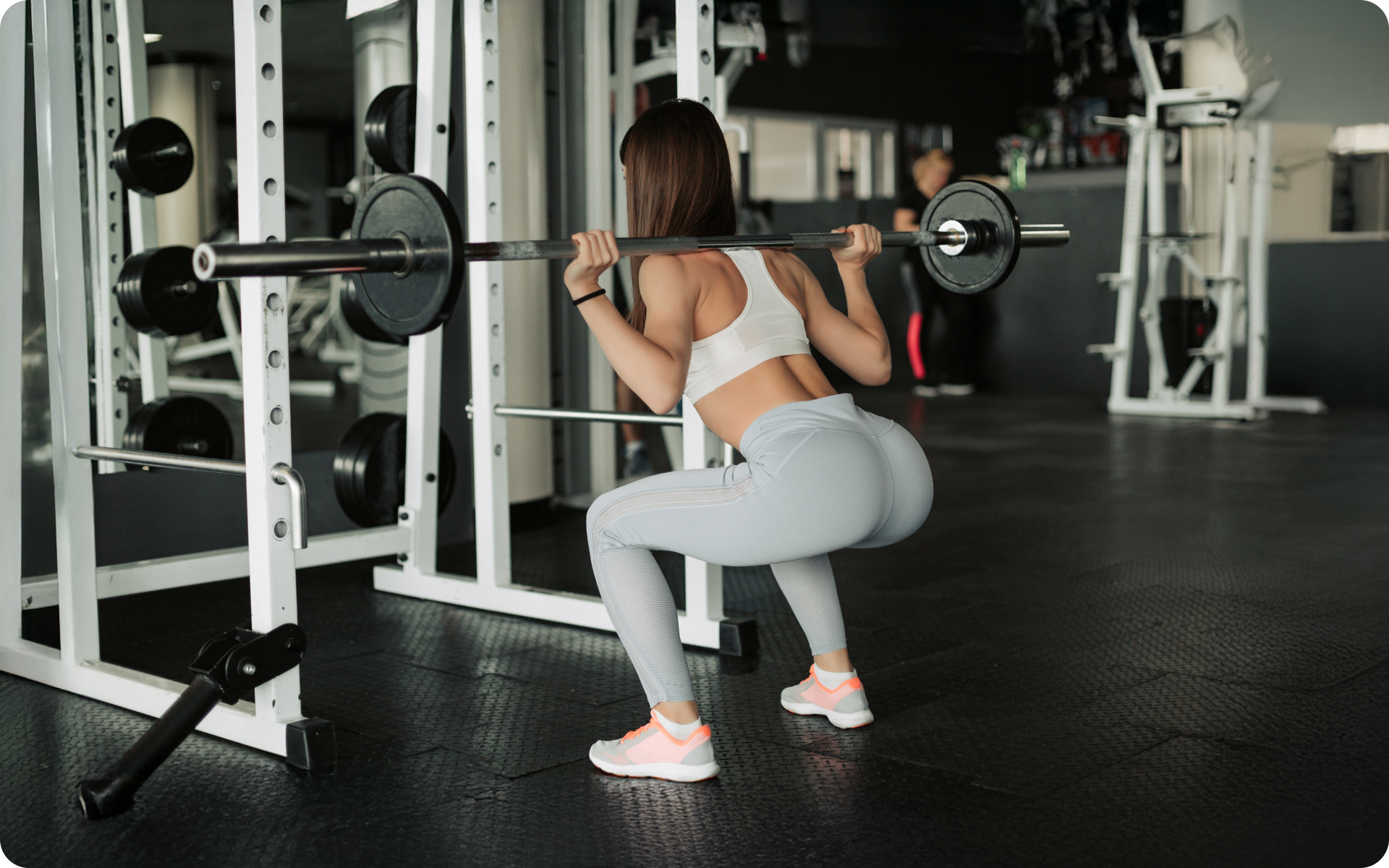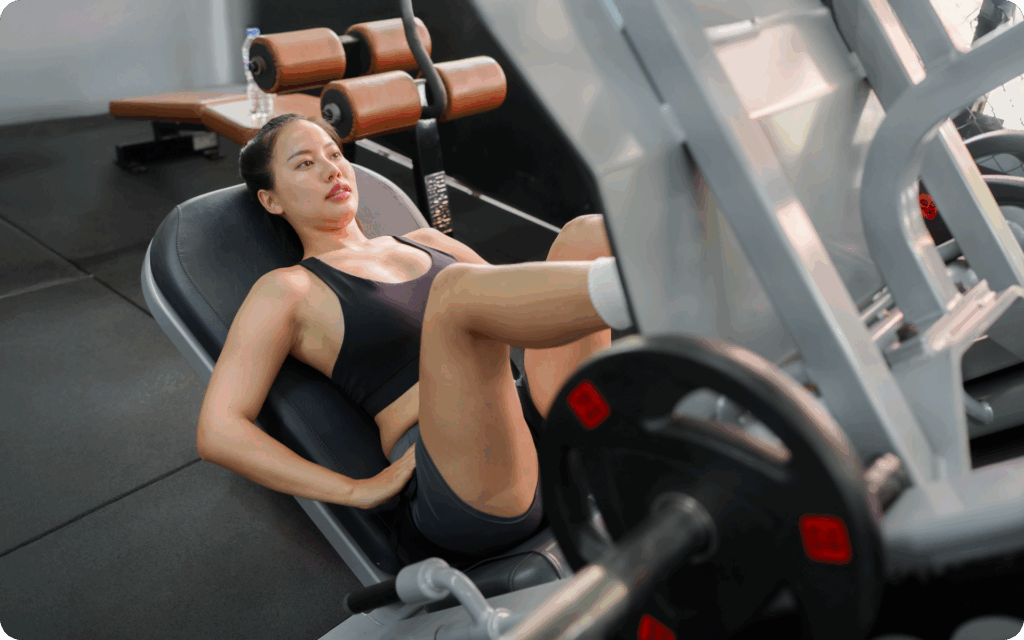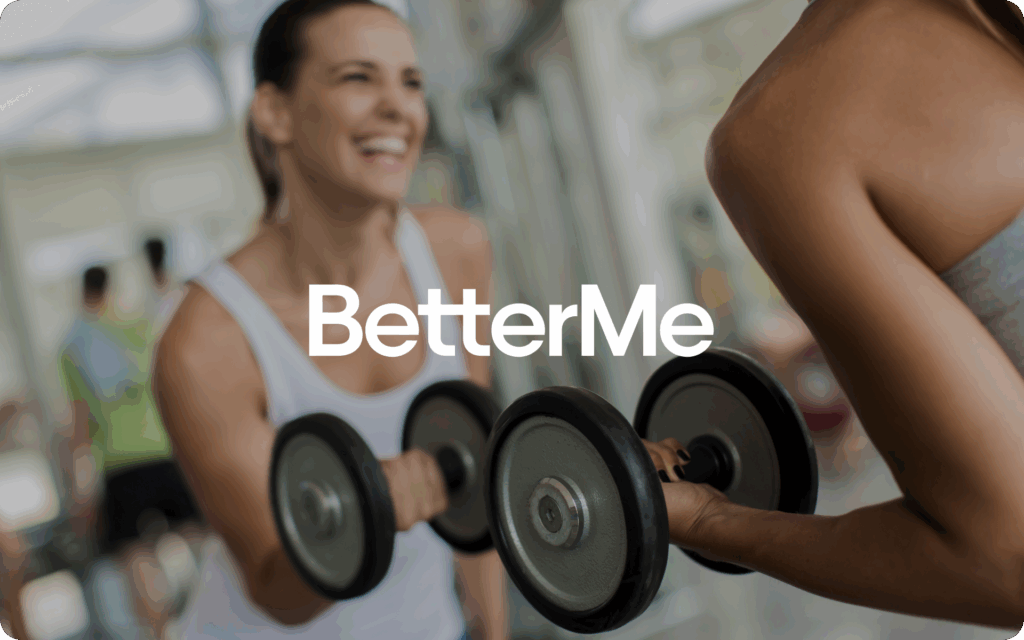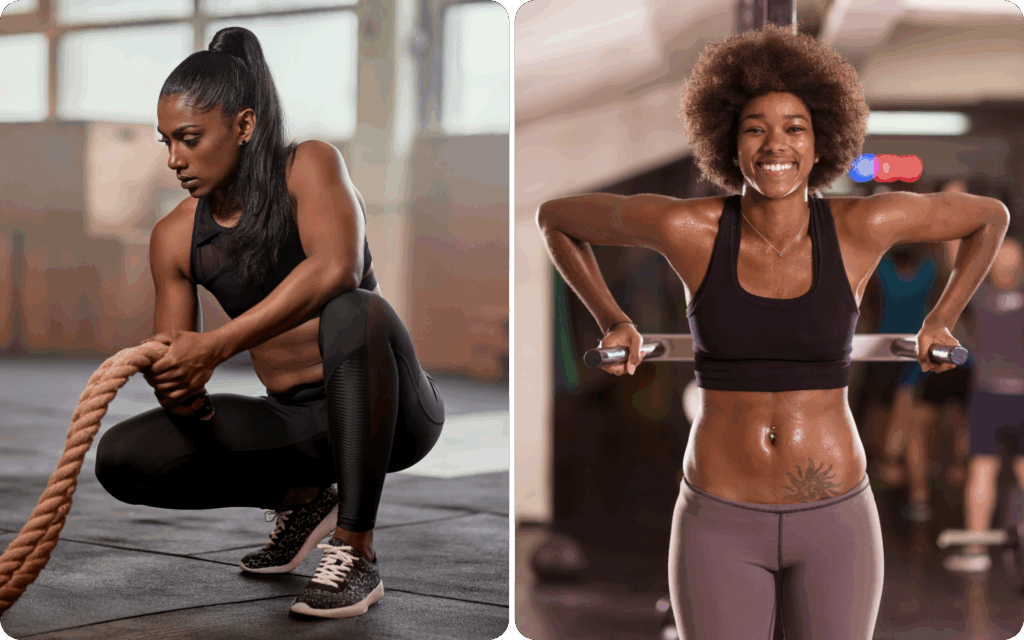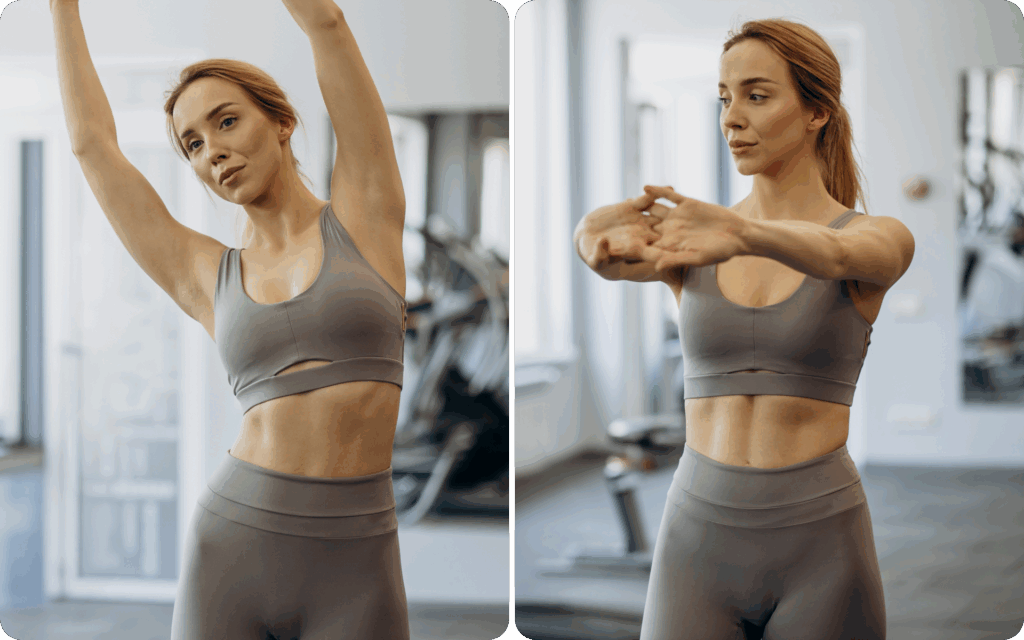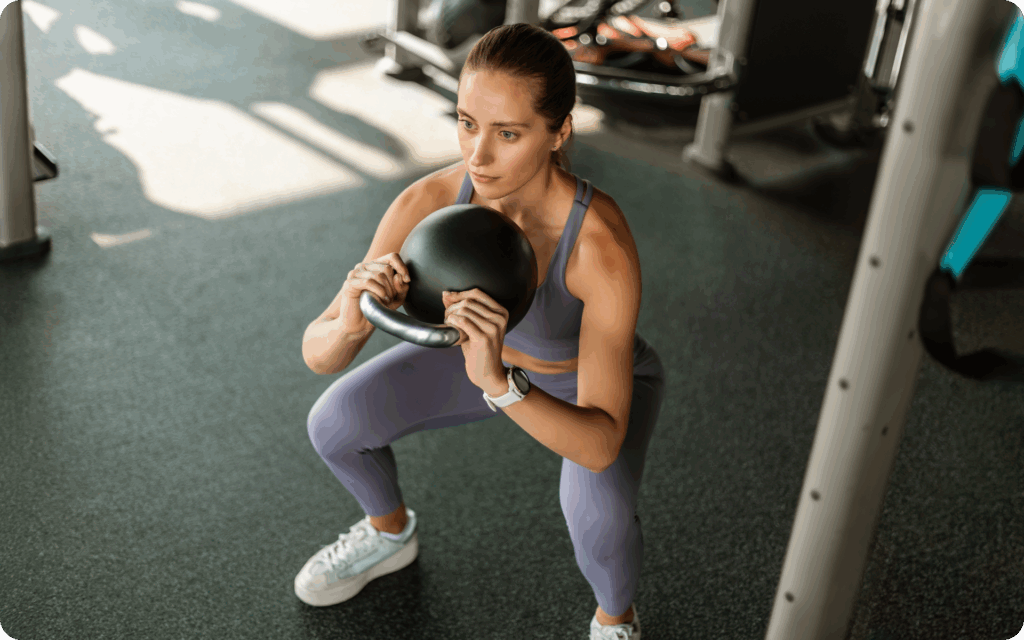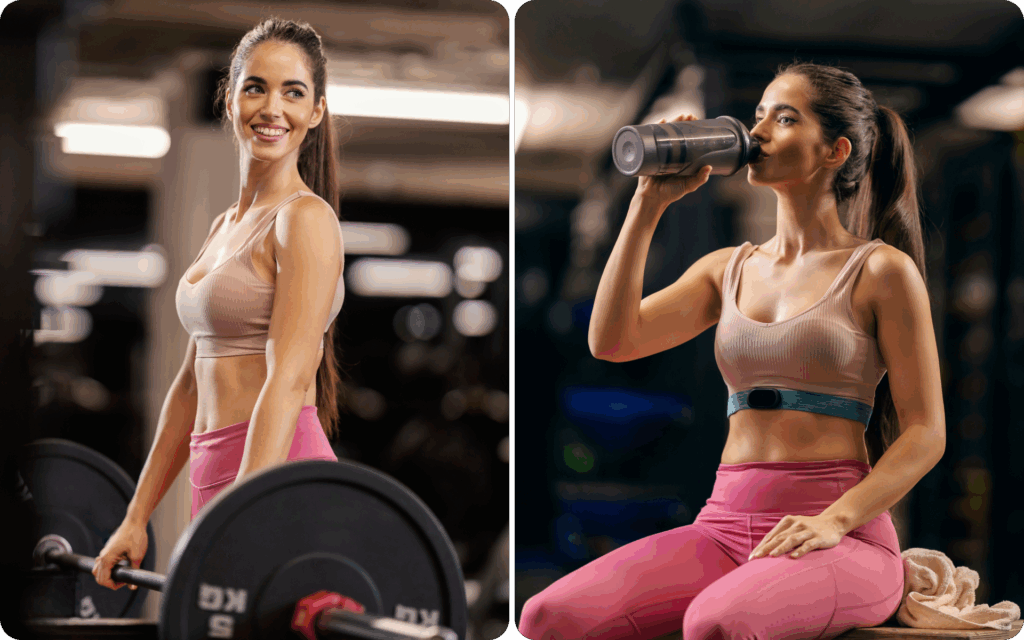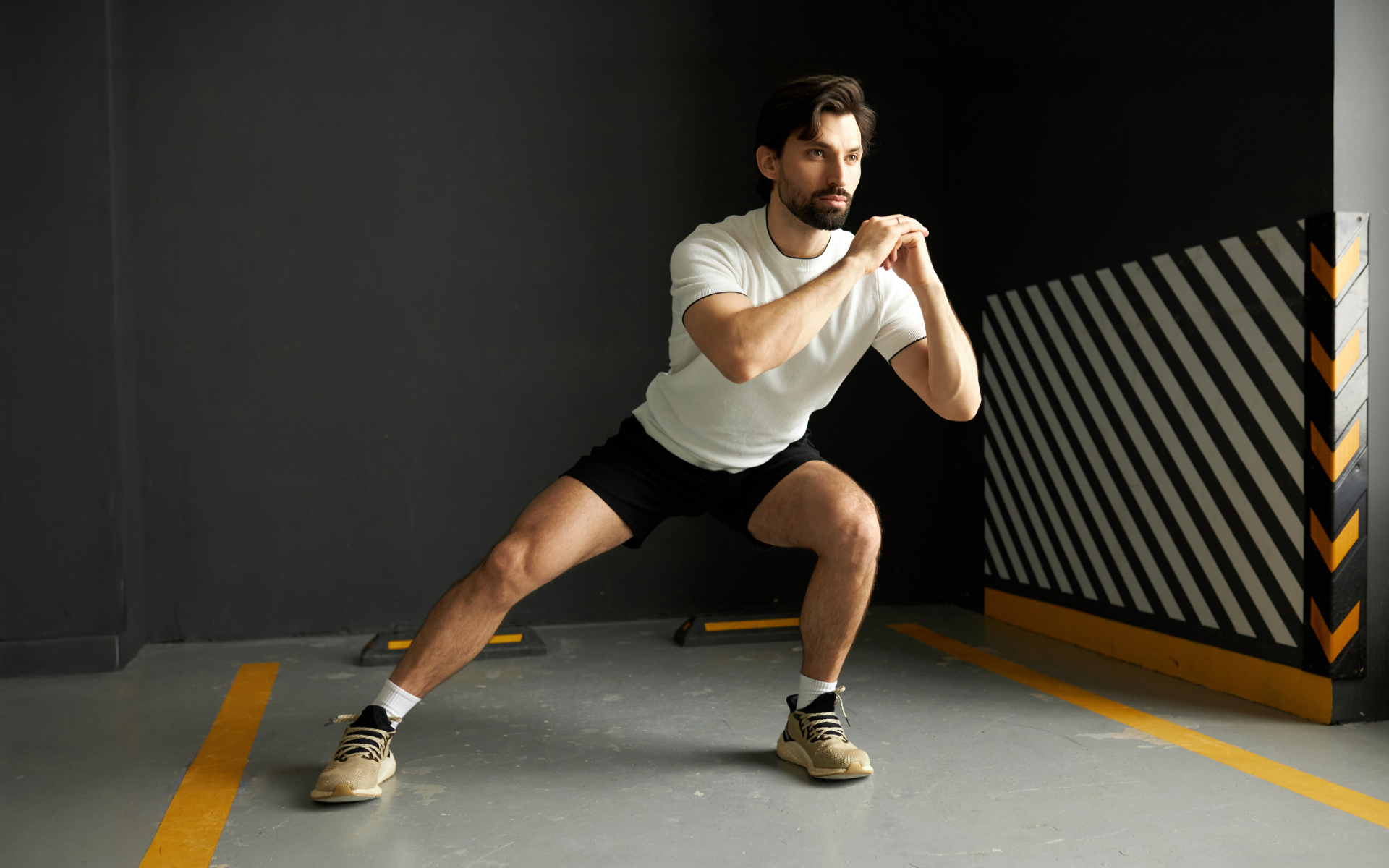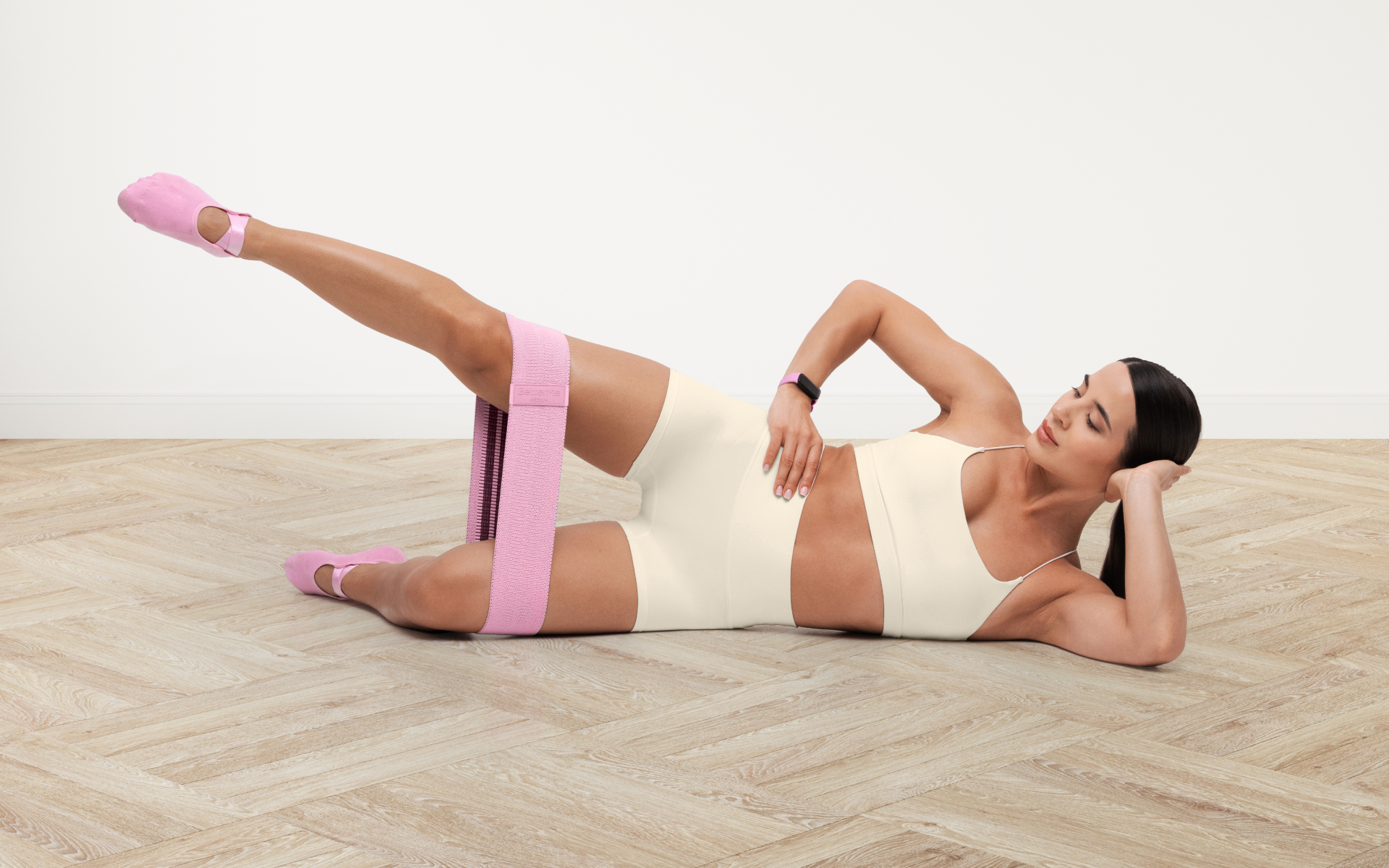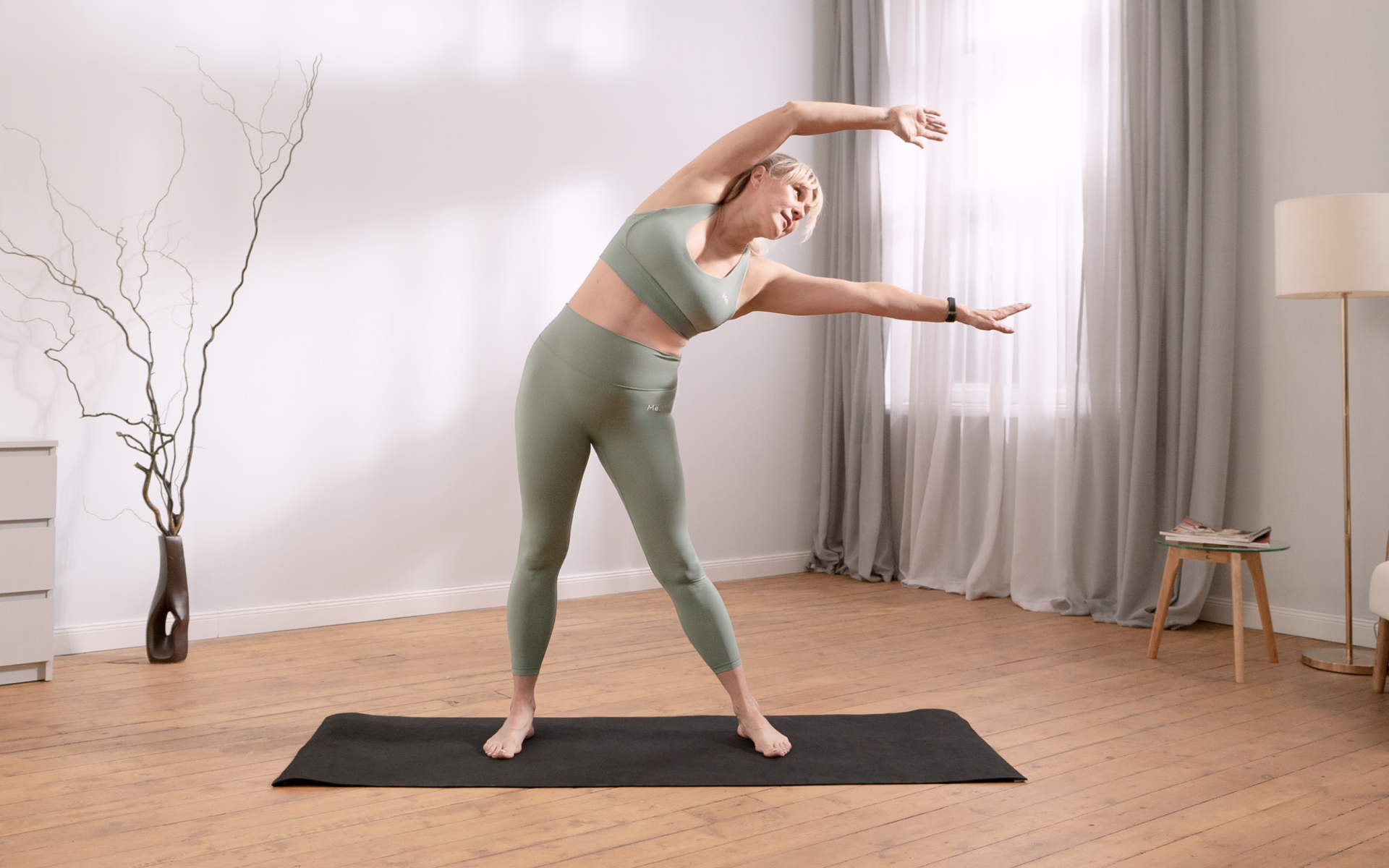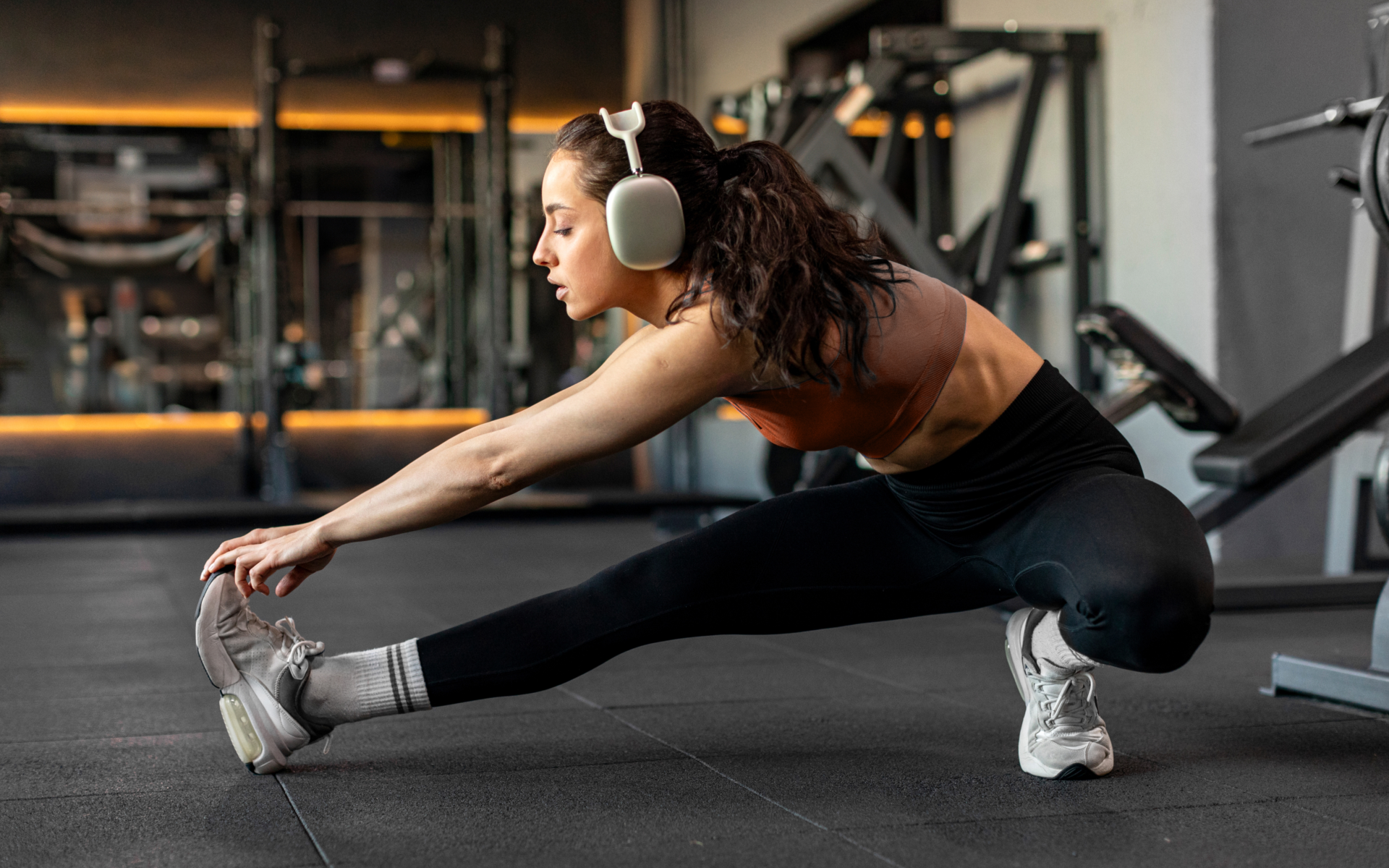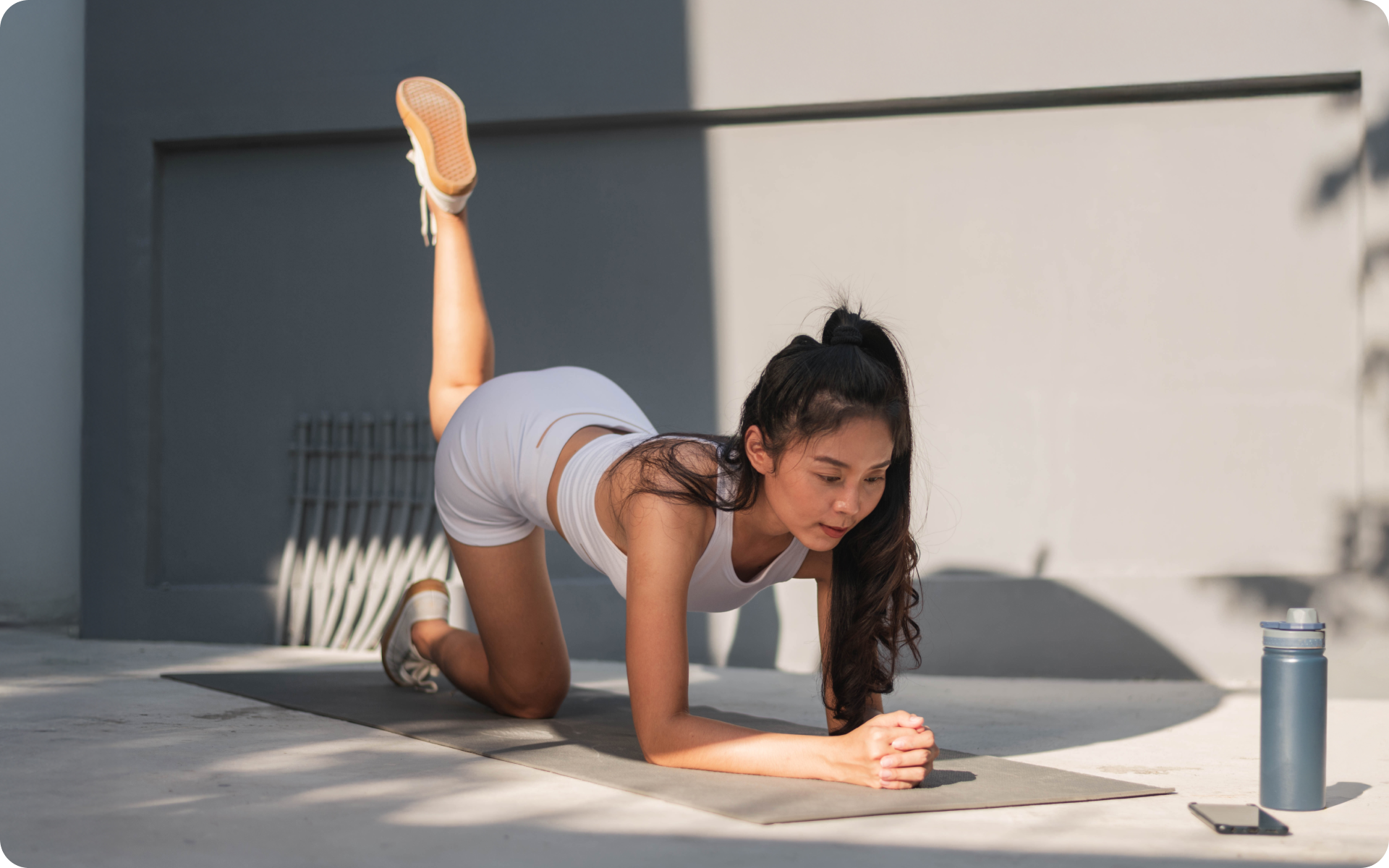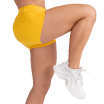Leg day. It’s one of the most talked-about (and sometimes dreaded) parts of any gym routine. Whether you love the challenge or struggle to find your footing, training your legs is a non-negotiable aspect of your training.
Your legs are home to some of the biggest and strongest muscles in your body, like the quadriceps, hamstrings, glutes, and calves. These muscles play a key role in maintaining balance, mobility, and preventing injury in everyday life.
But leg training isn’t just about throwing weights on a barbell or going as heavy as possible. A gym workout legs with weights routine involves learning the following:
- How your muscles work
- What exercises target them best
- How to avoid common mistakes
Understanding these aspects of leg workouts can make a world of difference in your progress. Our previous post goes into great detail about the high intensity leg workouts.
Here’s what you need to know about training your legs effectively.
How Often Should You Train Legs At The Gym?
Training muscles 2-3 times per week is optimal for most people (1).
This frequency applies to your legs as much as any other muscle group.
Training within this range provides sufficient stimulus to encourage growth and strength, while also allowing your body time to recover.
Doing too many leg sessions per week can lead to diminishing returns.
This overexertion means that after a certain point, extra work doesn’t translate into better results. For example, working out 4-5 times a week without enough recovery time might lead to overuse and limit your progress (2).
This risk of overworking yourself exists because the nervous system and supporting structures, such as tendons and ligaments, also need time to adapt. These systems lag behind muscles in terms of recovery speed. If you don’t allow them to repair, you may experience joint pain, inflammation, or a decline in performance (2).
Keep in mind that training intensity and volume (the total amount of work you’re doing) matter as much as frequency. Heavier lifting or higher reps take a bigger toll on your muscles, so you’ll need more recovery between sessions. Programs like “lower-body push” and “lower-body pull” splits enable you to train your legs more frequently by distributing the workload differently throughout the week.
Which Leg Exercises Build Muscle the Fastest?
Compound exercises, which engage multiple joints and muscle groups, tend to provide the most bang for your buck when it comes to muscle-building potential (3).
However, isolation exercises also play a valuable role in refining imbalances and achieving well-rounded development (4).
Legs comprise a complex system of muscles, including the quadriceps, hamstrings, glutes, and calves (5). Different exercises target these groups in unique ways, utilizing distinct movement patterns such as squats, lunges, and hinges.
Below are some common leg exercises that you can incorporate into your workout routine to strengthen and develop your lower body. What is a solid gym workout for legs to build strength?
Here’s your answer:
- Barbell Back Squat
Muscles Targeted: Quadriceps, glutes, hamstrings, and calves.
Many trainers refer to the back squat as the “king of leg exercises.” It’s a compound movement, meaning it engages multiple muscles and joints simultaneously.
The biomechanics involve hip and knee extension, with a strong emphasis on core stability.
Steps to Perform:
- Set a barbell on a squat rack at shoulder height.
- Stand under the barbell, positioning it across your upper back (not your neck).
- Grip the bar firmly, slightly wider than shoulder-width.
- Unrack the bar by stepping back and positioning your feet shoulder-width apart.
- Lower your body by pushing your hips back and bending your knees. Keep your chest up and back straight.
- Descend until your thighs are at least parallel to the ground, then drive back up to the starting position.
BetterMe: Health Coaching app helps you achieve your body goals with ease and efficiency by helping to choose proper meal plans and effective workouts. Start using our app and you will see good results in a short time.
- Romanian Deadlift (RDL)
Muscles Targeted: Hamstrings, glutes, and lower back.
The Romanian deadlift isolates the hamstrings and glutes with minimal knee movement.
It emphasizes hip hinging, which is essential for improving posterior chain strength and mobility.
Steps to Perform:
- Stand with your feet hip-width apart, holding a barbell or dumbbells in front of your thighs.
- Keep a slight bend in your knees and engage your core.
- Hinge at the hips, lowering the bar along your legs while maintaining a straight back.
- Stop when you feel a stretch in your hamstrings (just below the knees).
- Squeeze your glutes to return to the starting position.
- Bulgarian Split Squat
Muscles Targeted: Quadriceps, glutes, and adductors.
This single-leg exercise enhances balance and targets each leg individually, helping to address muscle imbalances. It involves hip and knee flexion and extension within a controlled range of motion.
Steps to Perform:
- Stand a couple of feet in front of a bench, with one foot resting behind you on the bench.
- Hold dumbbells at your sides, or keep your hands on your hips for balance.
- Lower your body by bending the front knee while keeping your torso upright and straight.
- Lower until your front thigh is parallel to the ground, keeping your knee in line with your foot.
- Push through your front heel to return to a standing position.
- Glute Bridge
Muscles Targeted: Glutes and hamstrings
The glute bridge is an excellent exercise for isolating the glutes while minimizing stress on the spine. It focuses on hip extension, making it a fantastic option for building posterior strength.
Steps to Perform:
- Lie on your back with your knees bent and feet flat on the floor, hip-width apart.
- Place your arms at your sides with palms facing down.
- Push through your heels, lifting your hips off the ground until your body forms a straight line from shoulders to knees.
- Squeeze your glutes at the top, hold for a moment, then lower back down slowly.
- Standing Calf Raise
Muscles Targeted: Gastrocnemius and soleus (calf muscles)
Calf raises isolate the lower leg, focusing on plantar flexion (pushing through the ball of your foot). They are crucial for developing ankle strength and stability.
Steps to Perform:
- Stand tall with your feet shoulder-width apart, either holding dumbbells or just body weight.
- Slowly rise onto the balls of your feet, lifting your heels as high as possible.
- Pause briefly at the top, feeling the contraction in your calves.
- Lower your heels back down in a controlled manner.
- Side-Lying Hip Adduction
Muscles Targeted: Adductors (inner thigh muscles)
This exercise isolates the adductors, which are often overlooked but play an essential role in stabilizing the hips and knees.
Steps to Perform:
- Lie on your side with your legs extended and hips stacked. Rest your head on your arm for support.
- Cross your top leg over your bottom leg, resting the top foot flat on the ground in front of you.
- Lift your bottom leg toward the ceiling, leading with your inner thigh.
- Lower it back down with control and repeat before switching sides.
Read more: Workout Challenge for Beginners: Your Complete Guide to Starting and Staying Fit
How Do You Structure A Balanced Gym Leg Workout?
Crafting a balanced leg workout is about more than picking exercises. It’s a strategic process that considers muscle function, energy expenditure, and recovery potential.
A well-structured workout ensures you’re targeting all major muscle groups while avoiding unnecessary fatigue or imbalances.
Here’s how to design a leg day that’s both effective and efficient.
- Start With A Warm-Up
Warming up prepares your muscles, joints, and nervous system for the workload ahead (6). Begin with light cardio (5-10 minutes) to increase blood flow.
Follow this with dynamic stretches, such as leg swings or walking lunges, to improve range of motion and activate key muscles.
- Prioritize Compound Movements First
Compound exercises involve multiple joints and muscle groups.
They demand the most energy and deliver the most significant overall benefit, so start here while your body is fresh (7). Examples include squats, deadlifts, and lunges.
These movements engage the quadriceps, hamstrings, glutes, and calves simultaneously, building both strength and coordination.
For compound lifts, aim for 3-4 sets of 6-12 reps.
- 6-8 reps: Focuses on building strength.
- 10-12 reps: Targets hypertrophy (muscle growth).
- Move To Accessory And Isolation Exercises
After compound lifts, shift to accessory and isolation exercises.
These exercises target specific muscles, enabling you to focus on areas that require more attention or need improvement. For example, Romanian deadlifts isolate the hamstrings, while glute bridges emphasize the glutes.
For isolation exercises, go for 3-4 sets of 10-15 reps.
Higher reps help to improve muscle endurance and ensure proper control during these smaller, targeted movements.
- Order Based On Biomechanical Demand
When organizing exercises, think about fatigue management and joint involvement.
- Power-based movements (e.g., barbell squat): Perform first when coordination and strength are at their peak.
- Moderate-load exercises (e.g., Romanian deadlifts, Bulgarian split squats): Place these next, as they still require stability but are less demanding than heavy squats or deadlifts.
- Isolation movements (e.g., leg extensions, calf raises): Add at the end of the session to exhaust specific muscles without requiring full-body engagement.
- Adjust Rest Periods Strategically
Rest between sets allows your muscles to recover for optimal performance (8).
Balance this to suit your goals.
- For heavy compound lifts, such as squats or deadlifts, rest for 2-3 minutes to sustain strength.
- For isolation exercises or higher-rep sets, rest for 30-60 seconds to maintain intensity while keeping the workout pace.
- Incorporate Progressive Overload
To grow stronger and build muscle, your workouts should become progressively more complex over time.
This method is progressive overload (9).
Ways to achieve progressive overload include:
- Increasing the weight gradually.
- Adding extra reps or sets.
- Reducing rest periods slightly.
- Improving form or range of motion.
Make minor, consistent adjustments each week to avoid plateaus and ensure ongoing progress.
- Cool Down To Aid Recovery
End your workout with a cool-down. Static stretches for the hamstrings, quadriceps, and calves can help reduce muscle tightness. This stretching period also promotes flexibility and aids recovery (6).
Read more: Lower-Body Gym Workout: 6 Key Exercises to Grow Muscle
What Is An Example Of A Complete Gym Workout For Legs?
Here’s a sample structure for a balanced gym leg workout:
- Warm-Up: 5-10 minutes of dynamic movement.
- Back Squat (3-4 sets of 6-8 reps): Compound lift focusing on overall strength.
- Romanian Deadlift (3-4 sets of 8-10 reps): Targeting posterior chain strength.
- Bulgarian Split Squat (3 sets of 10-12 reps per leg): Working unilateral leg strength.
- Leg Extensions (3 sets of 12-15 reps): Isolating the quadriceps.
- Calf Raises (3 sets of 15-20 reps): Strengthening lower leg muscles.
- Cool-Down: Static stretches for 5-10 minutes.
Is Running A Good Warm-Up For Leg Day?
Running can function as a general warm-up because it increases heart rate, improves blood flow to working muscles, and raises core temperature.
These are all important for priming the body for movement (10). However, for leg day, there are nuances to consider.
Moderate-intensity running activates the lower body muscles, including the quadriceps, hamstrings, glutes, and calves. It also facilitates joint movement in the hips, knees, and ankles, improving mobility to a degree. Running can serve as an adequate starting point.
Yet, research highlights one limitation of exclusively using running as a warm-up.
While it does promote circulation and elevate readiness, it doesn’t sufficiently prepare the neuromuscular system for the specific movements and loads required in weightlifting (11). For example, squats or deadlifts demand a high degree of motor control, force production, and range of motion that running doesn’t quite replicate.
Whether you’re a workout beast or just a beginner making your first foray into the world of fitness and dieting – BetterMe has a lot to offer to both newbies and experts! Install the app and experience the versatility first-hand!
- Intensity Matters
The intensity of your run influences its effectiveness as a warm-up.
A short, gentle jog (around 50-60% of your maximum effort) is generally more suitable. It warms the muscles without depleting energy reserves or causing fatigue, which is critical for a high-intensity workout like leg day. Running at higher intensities, such as sprinting, can lead to early fatigue that detracts from performance during your training session (12).
- Comparisons To Other Warm-Up Methods
While running has its benefits of leg workouts, a dynamic warm-up that incorporates movement patterns similar to those in your workout is often more effective (13).
For leg day, exercises like bodyweight squats, lunges, and leg swings not only elevate your heart rate but also activate the precise muscles and joints you’ll be using during your workout.
These movements can improve neuromuscular activation, which better prepares your body for the heavy loads and specific mechanics of resistance training.
For example:
- Dynamic stretches, such as leg swings: Enhance hip and knee mobility.
- Bodyweight squats: Prime the quadriceps, glutes, and hamstrings for lifting.
- Walking lunges: Enhance flexibility and engage the stabilizing muscles in the lower body.
Running on its own doesn’t achieve this same level of targeted preparation.
- A Structured Approach
If you enjoy running and want to incorporate it into your routine, it can be a good first step in a multi-phase warm-up.
Here’s how you could structure it:
- General Warm-Up: Start with 5-10 minutes of light jogging to raise your heart rate and core temperature.
- Dynamic Warm-Up: Follow with dynamic movements, such as lunges, high knees, or leg swings, to enhance muscle activation and joint mobility.
- Workout-Specific Warm-Up: Perform lighter sets of your exercises (e.g., bodyweight or low-weight squats) to acclimate your body to the specific movement patterns.
How Long Should A Gym Leg Workout Last?
A well-structured gym leg workout typically lasts between 45 and 75 minutes.
This time frame allows for a thorough warm-up, 5-7 exercises (including compound and isolation movements), and adequate rest periods.
Compound lifts with heavy loads may require 2-3 minutes of rest between sets, while isolation exercises need only 30-60 seconds. Keeping sessions under 75 minutes helps maintain focus, prevent fatigue-related form breakdown, and optimize recovery.
How Do You Increase Weight Safely In Leg Workouts?
Increasing weight during leg workouts requires a methodical approach to avoid injury and maximize progress. The key is maintaining proper form, gradually increasing load, and allowing sufficient time for recovery.
Progress should be incremental, adding small amounts of weight (10%) to ensure your muscles and joints adapt without strain (9).
Follow these tips to increase your weight safely:
- Master your form first: Ensure correct technique before adding weight.
- Progress gradually: Increase the load by small increments, around 5-10%.
- Focus on controlled reps: Avoid rushing; prioritize stability and control.
- Warm up properly: Start sessions with lighter sets to prepare your body.
- Use a spotter or safety equipment: For heavier sets, ensure extra support.
- Track your progress: Keep a log to monitor weight increases over time.
- Listen to your body: Stop if you feel pain or excessive strain.
- Allow recovery: Schedule rest days to enable your muscles to rebuild.
- Periodize your training: Rotate between heavier and lighter days to prevent overtraining.
- Stay consistent: Commit to a structured program for sustained progress.
How Fast Can You See Results From Regular Gym Leg Workouts?
Seeing visible results from a leg workout gym female, and leg workout gym male-focused depends on consistency, intensity, nutrition, and genetics.
- For most people, visible changes, such as improved muscle tone, can appear within 4-6 weeks of regular training.
- Strength gains are often noticeable sooner, as you’ll likely lift heavier weights within 2-3 weeks due to neural adaptations. Gym workout legs for mass start to take flight in this timeframe.
- However, muscle growth (hypertrophy) typically takes about 8-12 weeks with a consistent program and proper recovery (14).
Factors like protein intake, sleep quality, and your starting fitness level can influence these timelines. The better your nutrition and rest, the faster your muscles can repair and grow.
An effective leg workout includes a mix of compound exercises, such as squats and deadlifts, for overall strength, and isolation exercises, like leg curls and calf raises, to target specific muscles. Combining both types maximizes muscle engagement and development. Free weights, such as barbells and dumbbells, are ideal for compound lifts, while machines like the leg press and hamstring curl are great for isolation work (15). Resistance bands can also enhance stability and activation during movements, promoting strength gains (16). These methods can lead to the best leg workout for mass. Dynamic stretching before your workout helps improve range of motion and prepares muscles for exercise. Static stretching is best performed after your workout to enhance flexibility and support recovery (17). Free weights are superior for building strength and stability as they engage more stabilizing muscles (18). Machines are beneficial for isolating muscles and reducing the risk of injury, making them ideal for gym workout legs for beginners or as additional accessory work. Use both for a balanced routine.Frequently Asked Questions
Which leg workout is more effective?
What gym equipment is best for legs?
Should you stretch before or after a leg workout?
Are machines or free weights better for leg day?
The Bottom Line
Practical leg training combines compound movements, such as squats and lunges, with isolation exercises to target specific muscles. Gradually increasing weight, maintaining proper form, and prioritizing recovery are critical for safe and sustainable progress. Whether you’re a beginner or experienced lifter, consistency and a well-rounded approach will help you achieve meaningful results. Apply these insights to your workouts, and over time, you’ll see noticeable improvements in strength, endurance, and muscle definition.
DISCLAIMER:
This article is intended for general informational purposes only and does not serve to address individual circumstances. It is not a substitute for professional advice or help and should not be relied on for making any kind of decision-making. Any action taken as a direct or indirect result of the information in this article is entirely at your own risk and is your sole responsibility.
BetterMe, its content staff, and its medical advisors accept no responsibility for inaccuracies, errors, misstatements, inconsistencies, or omissions and specifically disclaim any liability, loss or risk, personal, professional or otherwise, which may be incurred as a consequence, directly or indirectly, of the use and/or application of any content.
You should always seek the advice of your physician or other qualified health provider with any questions you may have regarding a medical condition or your specific situation. Never disregard professional medical advice or delay seeking it because of BetterMe content. If you suspect or think you may have a medical emergency, call your doctor.
SOURCES:
- Progression Models in Resistance Training for Healthy Adults (2009, journals.lww.com)
- Overtraining Syndrome as a Complex Systems Phenomenon (2022, frontiersin.org)
- Get Bigger, Faster, and Stronger with Compound Exercises (2022, issaonline.com)
- Do Single-Joint Exercises Enhance Functional Fitness? (2012, journals.lww.com)
- Leg Muscles: Anatomy and Function (2021, my.clevelandclinic.org)
- Warm Up, Cool Down (2024, heart.org)
- Resistance Training with Single vs. Multi-joint Exercises at Equal Total Load Volume: Effects on Body Composition, Cardiorespiratory Fitness, and Muscle Strength (2017, frontiersin.org)
- Rest interval between sets in strength training (2009, pubmed.ncbi.nlm.nih.gov)
- Progressive Overload Explained: Grow Muscle & Strength Today (n.d., blog.nasm.org)
- Effects of general, specific, and combined warm-up on explosive muscular performance (2015, ncbi.nlm.nih.gov)
- Warming-Up for Resistance Training and Muscular Performance: A Narrative Review (2021, intechopen.com)
- Repeated-Sprint Ability Part I: Factors Contributing to Fatigue (2011, researchgate.net)
- Dynamic Warm-ups Play Pivotal Role in Athletic Performance and Injury Prevention (2025, sciencedirect.com)
- Adaptations to Endurance and Strength Training (2018, ncbi.nlm.nih.gov)
- Effect of free-weight vs. machine-based strength training on maximal strength, hypertrophy, and jump performance – a systematic review and meta-analysis (2023, biomedcentral.com)
- Effects of training with elastic resistance versus conventional resistance on muscular strength: A systematic review and meta-analysis (2019, ncbi.nlm.nih.gov)
- CURRENT CONCEPTS IN MUSCLE STRETCHING FOR EXERCISE AND REHABILITATION (2012, ncbi.nlm.nih.gov)
- Effect of free-weight vs. machine-based strength training on maximal strength, hypertrophy, and jump performance – a systematic review and meta-analysis (2023, biomedcentral.com)
